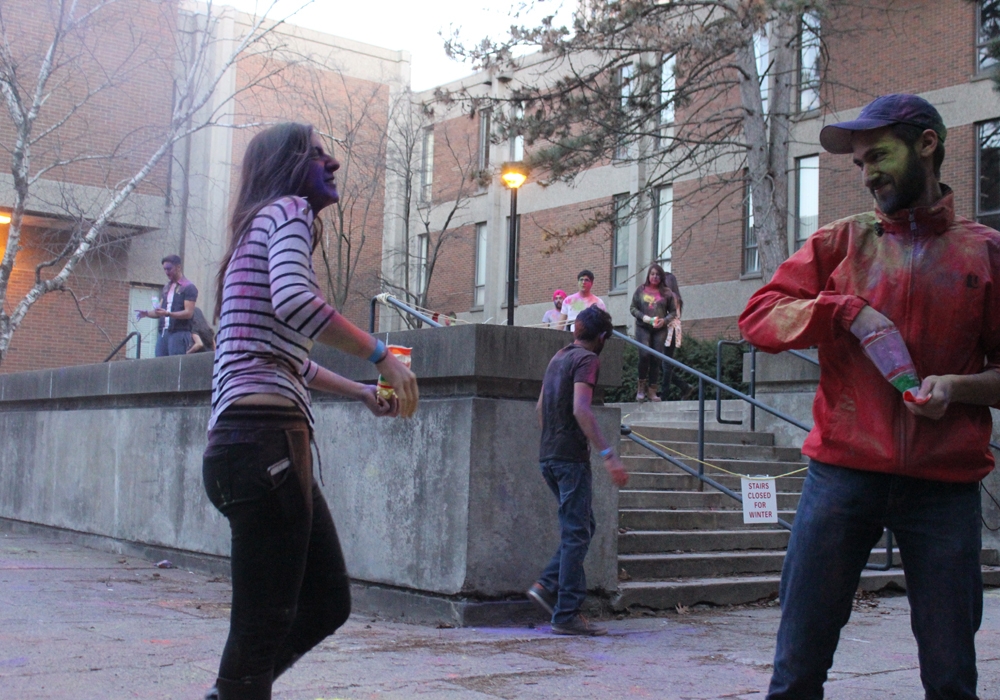Spring is here. Whether the infamous groundhog saw his shadow or not, a traditional religious festival welcomes spring’s arrival in the most colourful way possible. Picture this: a wide field, hurling powders of varying shades of the rainbow, joyous crowds, and high energy. The popular Color Run might come to mind, but the race series takes its inspiration from something that has deeper roots.
The colourful festival of Holi finds its roots in India, particularly its north. The festival is said to celebrate the victory of good over evil. Holi also welcomes the arrival of spring, following the Hindu calendar, which can fall between the end of February to mid-March. During this two-day festival, brightly coloured perfumed powders and water are hurled at one another, sweet delicious foods are cooked, and music generally plays in the background, fostering a friendly atmosphere.
While India is separated by kilometres, distance proved meaningless as the diaspora of York engaged in the celebration. On March 18, the Indian Cultural Association hosted the celebration. As people wore traditional clothing, played holi, ate traditional Desi food, and performed top-notch performances including Bhangra dance, the event brought over 170 people together, both Indians and non-Indians alike. Those with traditional suits and sarees cautiously stood on the sidelines as participants played holi, throwing and dodging the coloured powder. By the unofficial honour code, sideliners were off-limits, but occasionally they would be threatened with a hug.
So, where does the term “Holi” come from? A close look at the legends, which vary from region to region, may provide the answer. However, the most prominent story seems to be the one associated with King Hiranyakashyap.
Legend has it that Hiranyakashyap became arrogant, even thinking of himself as God, demanding his kingdom to worship him. To his great disappointment, his son Prahlad became an ardent devotee of Lord Vishnu. He attempted to kill his son by calling for his sister, Holika, to enter a blazing fire with Prahlad in her lap. Hiranyakashyap unknowingly assumed Holika would not be harmed since she had a magic robe that had the power to save the wearer from burning in fire. However, his plan backfired, since the robe only worked when entering fire alone. Holika was killed, and Prahlad was saved by God’s grace for his devotion. The tale hints at the meaning behind the word “Holi,” meaning “burning,” and the good conquers evil message of the festival.
Artistic process and ingenuity are weaved throughout the tradition. This is evident in the method of making the powders and processing their colours, which differ based on region. “As a popular method in Northern India, people extract natural colours from flowers or local flora,” describes ICA Vice-President, Dhaivat Pancholi.
“While in Western India, due to rich soil compositions and different soil colour, soil is used.”
As aesthetically pleasing as the colours are to look at, each carries great significance. Pancholi explains the colours, “Red is a mark of matrimony, yellow a colour of auspiciousness, while green symbolizes harvest and fertility.”
Holi is also known as the festival of sharing love, as it bridges gaps and renews relationships. Despite differences, everyone is fair game. “A specific phrase is said by all while colouring anyone,” explains Pancholi. “‘Bura na maano Holi Hai’, meaning, ‘Don’t take offence as it’s Holi’.” After all, who could get mad at this fun makeover?
“At the end when all people are coloured, everyone becomes an equal regardless of any differences of colour, caste, or social levels and this signifies unity in diversity,” describes Pancholi.
Let the energetic and colourful spirit of Holi remind us that new beginnings are just around the corner. Duck!
The art of Holi


